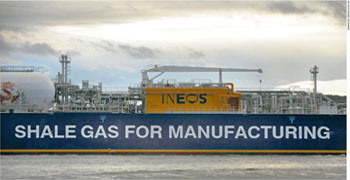OIL PRODUCTION
THE BAROMETER
Yasmin Helal analyses the primary reasons for the slump in oil prices over the past few years
 It just so happens that the world’s oil wealth is located underneath a land in turmoil. It’s both a blessing and a curse: a blessing because it brings enormous wealth; and a curse because that wealth is tightly packaged with Western intervention.
It just so happens that the world’s oil wealth is located underneath a land in turmoil. It’s both a blessing and a curse: a blessing because it brings enormous wealth; and a curse because that wealth is tightly packaged with Western intervention.
The oil wealth of the Gulf Cooperation Council (GCC) was discovered, operated and owned by International Oil Companies (IOCs) until recently. The current National Oil Companies (NOCs) of the region were even founded for Western players.
And even though local authorities eventually nationalised oil assets with Iran being the first to do so in the early 1950s, IOCs continued to be important players in the regional oil and gas markets – and this inevitably led to political conflicts in the region.
The Arab Spring – a series of revolutions that took root in 2011 across the Middle East and North Africa – led to a bubble in the global oil and gas market. During the unrest, numerous countries with substantial oil and gas reserves like Egypt, Libya, Tunisia and Syria were dragged into conflicts that have not yet been resolved.
All this drastically impacted the oil and gas market.
In early 2014, the price per barrel (bbl) reached its peak, and settled at US$ 112 and 105 dollars later in June. This increase encouraged producers to pump as much oil as possible, which was a move that had severe repercussions on the global energy markets. A mere five months later, oil prices tumbled to US$ 62 and 59 dollars a bbl as a result of the oil glut.
Since the price of crude oil and natural gas are inevitably interlinked, the low oil prices also impacted these commodities.
Oil producers responded to this dip by continuing to increase production. The price of a barrel of black gold declined consistently for another two and a half years. Last year, both state-owned and private oil companies began accepting the new prices as being the new norm. And they adopted new strategies like cutting costs, and implementing merger and acquisition activities.
The dilemma was whether oil exporting countries should compete for profit or market share. Along with other GCC states, Saudi Arabia looked to Asia to strengthen relationships with the world’s largest oil consumers like India, China, South Korea and Japan.
Meanwhile, US-based producers continued pumping more oil for increased profits.
North America has always possessed large reserves of shale oil and gas but this wasn’t considered a significant resource until years of R&D led to hydraulic fracturing and horizontal drilling technologies, maximising production at the well site. The emergence of shale in the global market in 2012 contributed to the oil glut and decreasing oil prices.
The Organization of the Petroleum Exporting Countries (OPEC) was widely blamed by Western media for not intervening to balance the oil market. On the other hand, OPEC members pointed out that all oil producers across the globe were accountable for this, urging other nations to step up to the plate. During a series of meetings held last year, OPEC members debated and called on other oil producers to join them in the discussions.
At a meeting in late November, OPEC members decided to reduce oil production output for a trial period of six months beginning in January this year.
At a subsequent meeting in December, which was attended by non-OPEC members as well, the output deal and quantity that oil producers had to reduce was finalised. The attendees included Russia, Azerbaijan, Bahrain, Bolivia, Brunei, Equatorial Guinea, Kazakhstan, Malaysia, Mexico, Oman, Sudan and South Sudan.
OPEC agreed to slash output by 1.2 million barrels per day (bpd) from 1 January with leading exporter Saudi Arabia cutting as much as 486,000 bpd. “This agreement cements and prepares us for long-term cooperation,” Saudi Energy Minister Khalid al-Falih told reporters, calling it a “historic deal.”
Iran and Iraq, both of which had suffered from sanctions and political unrest until recently, resisted attending the meeting. Iran was offered a waiver that was unsettling for regional rivals like Saudi Arabia but the kingdom eventually gave in. For non-oil-rich countries like Bahrain and Oman, the production cut was a blow – but at least it presented a glimmer of hope for the future.
Shortly following the meeting of oil-producing nations, the price of black gold began to rise, increasing to slightly above the US$ 60 per bbl range in January. Contrary to Western expectations, OPEC members stuck to the deal though some sceptics believed they didn’t have a choice since most GCC refineries were closed for maintenance during this period.
On the other hand, US producers continued to pump more oil to take advantage of the slight increase in prices. Not only did this leave OPEC at a risk of losing market share but it also sent prices diving to around US$ 50.
By late March, OPEC released a statement recommending an extension of the output reduction for another six months beyond the initial period that ends this month. It isn’t clear whether this was driven by a strong urge to balance the market or for other reasons.
The next steps to be taken have yet to be confirmed. Meanwhile, low oil prices continue to be the new reality.



